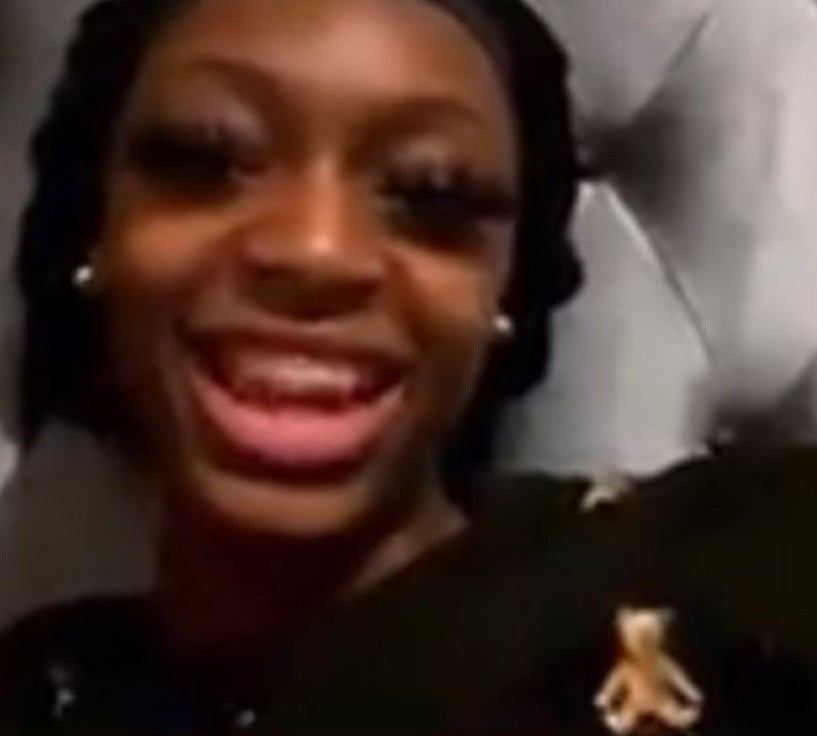Hey Kayla How You Doing Original Video and Hi Kayla No Blur
In today’s fast-paced world of digital media, almost anything can become a viral sensation within hours. This phenomenon was once again on display when a clip known as the “Hey Kayla How You Doing” video, followed closely by the “Hi Kayla No Blur” version, circulated widely across the internet. What started as an Instagram Live session between two young women suddenly became the subject of countless shares, debates, memes, and even ethical conversations.

The videos captured not only attention but also controversy. Viewers found themselves divided between amusement, confusion, and concern, while the viral spread raised bigger questions about online privacy, live-streaming culture, and the unpredictable power of internet fame.
This article takes a detailed look at the origins of the videos, their explosive reach across platforms, public reactions, and the broader implications of such viral phenomena.
Contents
Background of the Incident and Video
The story began with a seemingly ordinary Instagram Live session featuring two young women. Unlike pre-recorded videos, live streaming carries an element of unpredictability, as viewers can watch interactions unfold in real time. In this case, the conversation between the two girls took a sudden turn that would later define the video’s popularity.
Hey Kayla How You Doing Original Full Video
key-kayla-how-you-doing-original-video.mp4
The phrase “Hey Kayla, how you doing?” became a focal point of the clip. Its casual delivery and the context in which it was said caught viewers’ attention. Shortly after, variations of the moment surfaced online, including the so-called “Hi Kayla No Blur” version, which was presented without editing or censorship.
The personalities of the two girls also contributed to the intrigue. Their expressions, tone of voice, and the dynamic between them kept viewers hooked. Importantly, the video gained traction not just because of what was said but because of how it was received by audiences watching live.
The Viral Spread
Like many viral moments, this video did not remain confined to Instagram. Once the live stream ended, clips and screen recordings began circulating on other platforms. TikTok users were among the first to seize upon the content, creating reaction videos, edits, and remixes of the “Hey Kayla” line.

Twitter (now X) amplified the video further. Users debated the meaning of the interaction and speculated about the two girls’ intentions. The catchphrase itself quickly turned into a meme, used in unrelated contexts as a form of digital shorthand.
YouTube also played a role. Commentary channels reposted the videos, adding their analysis or reactions. Some positioned the clip as lighthearted entertainment, while others critiqued the cultural fascination with viral, often awkward, moments.
What became clear was that the speed of distribution outpaced any attempt by the original participants to control the narrative. Once the video was in the hands of the internet, it took on a life of its own.
Public Reaction
Public response to the “Hey Kayla” video was far from uniform. Many viewers found it funny and harmless, a simple interaction that turned unexpectedly into a meme-worthy moment. For these audiences, the video was entertainment an example of how ordinary moments can become extraordinary when captured in the right context.
Others, however, took a more critical stance. Some questioned why such a simple exchange became a viral obsession at all, seeing it as a symptom of internet culture’s tendency to sensationalize trivial content. A more serious group of critics pointed to the ethical implications: the two girls may not have intended for their conversation to reach millions of people, yet their images and voices were now being endlessly shared and dissected.
The division highlighted an ongoing tension in digital culture: the balance between entertainment and exploitation. For every viewer who laughed, there was another who worried about the unintended consequences for those at the center of the viral storm.
The “No Blur” Version and Its Impact
The controversy deepened with the emergence of the “Hi Kayla No Blur” version. Unlike the original clip, which some versions obscured or censored in certain ways, this iteration circulated uncensored. Its release intensified conversations about privacy and consent.
For supporters, the “no blur” version represented authenticity. They argued that audiences had a right to see the unedited material to understand the full context of the interaction. For critics, however, it crossed a boundary. By sharing the uncensored clip, viewers amplified exposure without the girls’ explicit approval, potentially causing long-term consequences for their reputations.
This tension reflected a larger issue: once content goes viral, the original creators or participants often lose control. The audience, rather than the individuals involved, dictates how the video is consumed, edited, and repurposed.
Media and Commentary
As the video’s reach grew, online commentators and media outlets weighed in. Influencers made parody skits, comedians referenced the catchphrases, and bloggers dissected why the moment resonated so strongly.
Some commentary channels suggested the video’s success lay in its relatability. The awkward yet humorous exchange between the two girls mirrored countless real-life interactions that viewers recognized in their own lives. Others argued that the incident revealed society’s fascination with voyeurism watching private or semi-private moments unfold for public consumption.
In any case, the two girls became symbols of internet virality. Their names may not have been as important as the cultural shorthand their interaction created. “Hey Kayla, how you doing?” became more than a line it became a meme embedded in digital discourse.
Broader Issues Raised
Beyond entertainment, the incident raised several broader issues worth considering:
The Risks of Live Streaming
Live sessions are unpredictable. A single remark or gesture can be captured, clipped, and shared indefinitely. For young people, the stakes are even higher, as they may not fully grasp the permanence of digital content.
The Line Between Humor and Exploitation
While many laughed at the video, others questioned whether the widespread sharing turned the girls into unwilling subjects of ridicule. Internet fame often comes at a personal cost.
Digital Footprints and Reputation
Viral videos can resurface years later, impacting careers, relationships, or mental health. The “Hey Kayla” incident serves as a reminder that digital footprints are nearly impossible to erase once widely circulated.
Audience Responsibility
Viewers play a role in shaping the trajectory of viral content. By choosing to share, remix, or critique, audiences collectively determine whether a clip is seen as humorous, harmful, or both.
The “Hey Kayla How You Doing” and “Hi Kayla No Blur” videos demonstrate the unpredictable nature of online fame. What began as a simple Instagram Live session between two girls quickly escalated into a viral moment that sparked both laughter and controversy.
The incident highlights the power of digital platforms to turn private interactions into public spectacles, often without the consent of those involved. At the same time, it reflects our cultural appetite for viral content catchphrases, memes, and moments that entertain, provoke, or unite us in collective curiosity.
Ultimately, the story of “Hey Kayla” is more than just about two girls on Instagram. It is about the evolving dynamics of internet culture, the risks and rewards of live streaming, and the responsibilities that come with both creating and consuming online content.
As social media continues to blur the line between entertainment and privacy, the lessons from this viral moment remain clear: digital fame is unpredictable, powerful, and often double-edged.
Daily News -Ryan Easley Tiger Video and Tragedy at Growler Pines
Younglo Instagram Story Video Sparks Uproar and Controversy
Edwin Cruz Gomez Video and the Death of Jhoanny Gomez-Alvarez
Tyler Robinson Video in the Fatal Shooting of Charlie Kirk
Yordanis Cobos-Martinez Video Kill Chandra Nagamallaiah in Dallas Motel Beheading
Charlie Kirk Shooting Full Video on X/Twitter and Close Up
James Charles Video Leaves Internet Stunned and Talking

